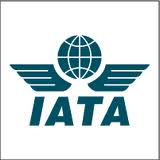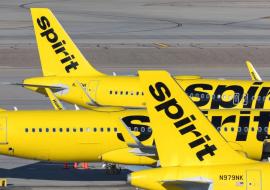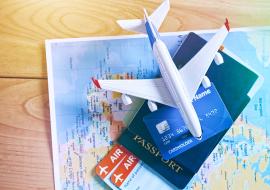IATA Reports Stronger Passenger Traffic for September

The International Air Transport Association (IATA) said international passenger traffic strengthened in September, showing a 10.5 percent year-on-year increase. That is significantly stronger than the 6.5 percent rise recorded for August. International freight traffic recorded a 14.8 percent year-on-year increase, which is significantly weaker than the 19.0 percent rise recorded in August.
The contrast between the performance of freight and passenger markets provides a mixed picture for industry performance. Seasonally adjusted figures show that compared to the previous month (August), passenger traffic expanded by 2.1 percent while freight markets contracted by an equal 2.1 percent.
The rebound in growth in passenger markets during September can be attributed to normal volatility in travel patterns accentuated by special factors such as the effect of the Ramadan. Passenger capacity expanded by 7.3 percent, below the 10.5 percent growth in volumes, pushing global load factors up to 80 percent. This is a significant improvement on the 77.7 percent recorded for September last year.
While freight markets were expected to weaken towards year-end, September’s decline was larger than anticipated. Consumer and business confidence remains weak in many parts of the world. Re-stocking lifted freight markets earlier in the year, but this has not been followed by spending to solidify the economic recovery. Compared to September 2009, freight capacity has increased by 11.9 percent, below the 14.8 percent increase volumes, pushing cargo load factors to 52.4 percent.
“It is good news that the recovery in passenger markets continued in September,” said Giovanni Bisignani, IATA’s director general and CEO. “But the freight numbers are worrying. Freight activity has fallen 6 percent since May’s post-crisis peak. What we see in air cargo markets is inevitably reflected in the broader economy.” Since international air cargo accounts for 35 percent of the value of goods traded internationally, it is a leading indicator of economic activity.
North American carriers saw their traffic climb back to pre-recession (early 2008) levels during the month with an 11.1 percent increase in passenger demand compared to the previous September. This outstripped a 7.2 percent capacity expansion. The region recorded the strongest passenger load factors at 84.1 percent.
European carriers met an 8.4 percent increase in demand over the previous year with a 5.9 percent increase in capacity. The region’s carriers reported an average load factor of 82.6 percent. The region is now 2 percent above pre-recession levels.
Asia-Pacific carriers posted an 8.6 percent traffic increase over the previous September against a capacity increase of 6.9 percent. While the region led the recovery with an early surge in demand, growth in 2010 has been largely flat. Traffic in the region remains 2 percent below the pre-crisis peak recorded in early 2008.
Middle Eastern carriers led the industry growth with a 23.9 percent increase compared to 2009. The earlier occurrence of Ramadan dampened demand in August, but boosted September’s traffic. This outstripped capacity growth of 15.3 percent. Nonetheless, load factors of 76.8 percent were below the industry’s 80 percent performance.
Latin American carriers posted the industry’s weakest growth at 6.6 percent with a 0.5 percent increase in capacity. The weakness is largely due to the ceasing of all operations by Mexicana. African carriers reported a 16 percent growth in demand over the previous September against a 10.1 percent increase in capacity. The region is now 7 percent higher than the pre-recession levels of early 2008.














